DWELL BEYOND THE ORDINARY
What Is the History Behind Log Cabins?
The Mystery Behind Log Cabin History
Ever wonder where these sturdy, laid-back housing structures originated? Did you know that they aren’t even original to the Americans? No, they aren’t original with Americans. And neither can the British lay claim to these cozy fortresses.
Let’s enjoy uncovering the mystic behind the log cabin origin story, such as its beginnings and the historical impact that log cabins have had in shaping architectural genius and North American history.
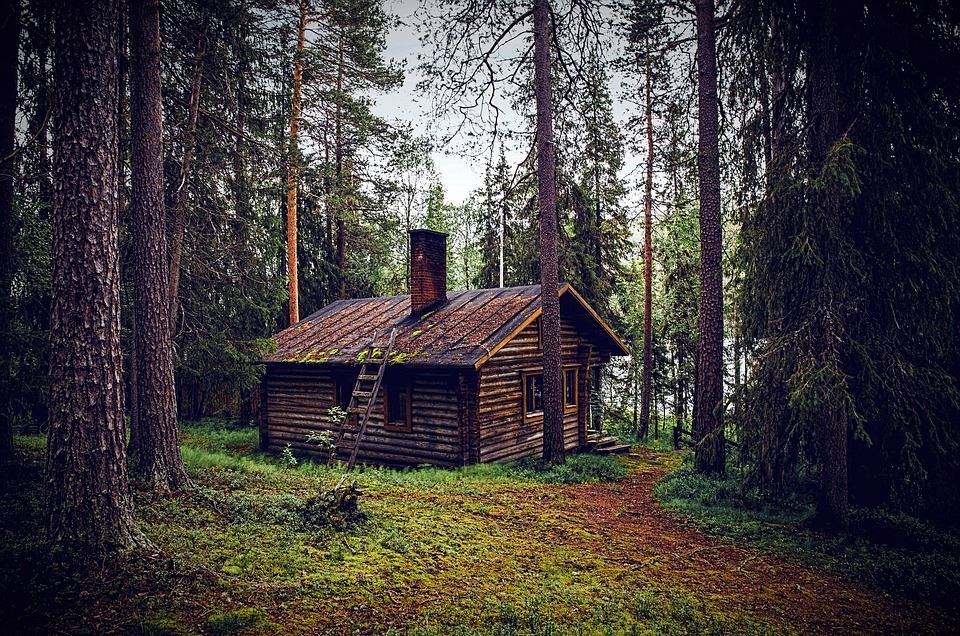
Log Cabin’s Enduring Legacy!
Anywhere from Lincoln Logs, Little House on the Prairie, to Dolly Parton, log cabins have left an irrevocable impression on the American mind. Of course, you are likely to think of Abraham Lincoln (inspiration behind the beloved Lincoln Logs) and his famous log cabin home as well.
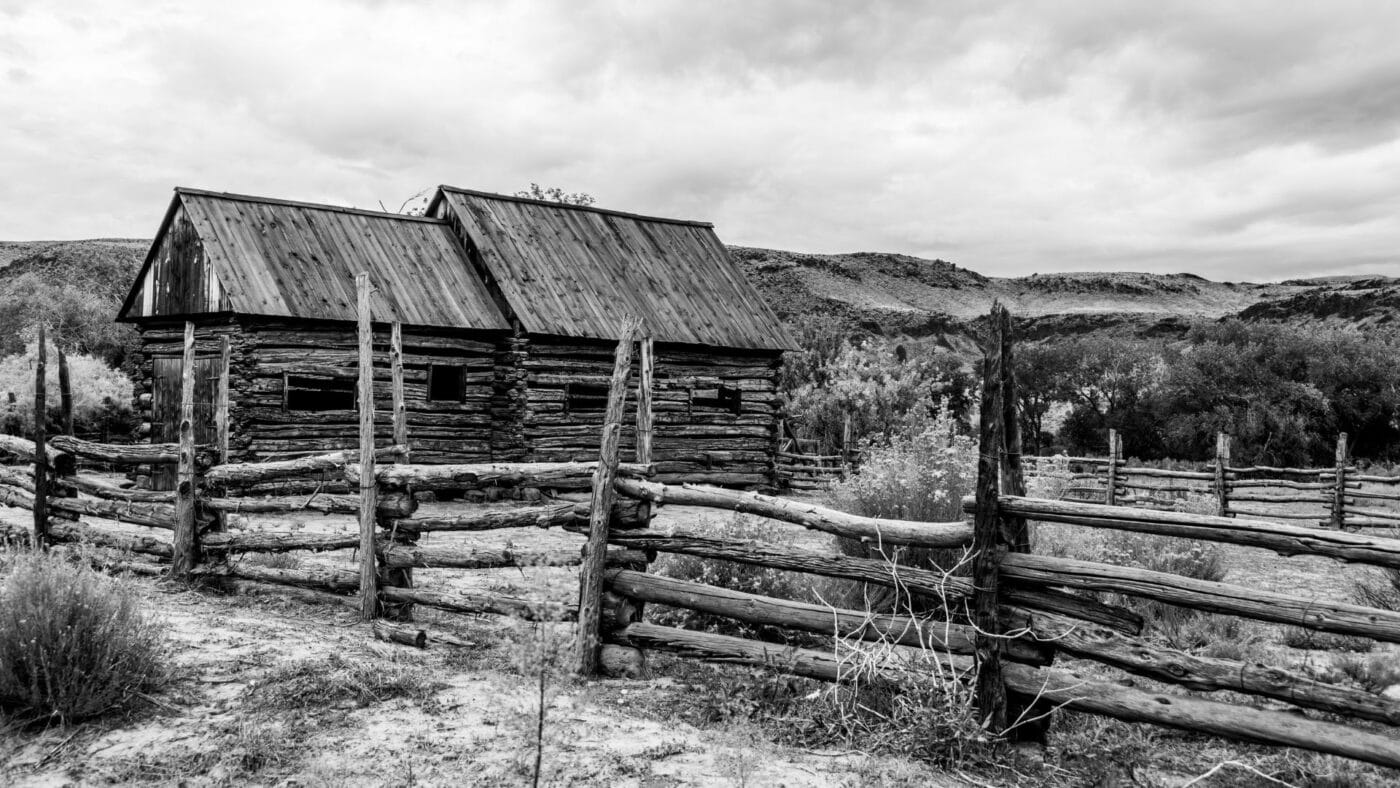
Before this style of homes came to America, the log cabins were iconic to the European Continent; however, they have become particularly iconic and symbolic to North American Frontier history. Furthermore, the legacy continues today as log cabin homes take over the housing market like never before! Take a look at this cabin below and see how you can plan your log cabin home.
How Did Log Cabins Come Into Existence?
Even Rome Admired The Log Cabin
Log cabins weren’t self-created. Although they may feel timeless, many believe their beginnings date back to the Bronze Age and the Roman Empire, around 3,500 B.C. The connection to the Roman Empire comes from a Roman architect, named Vitruvius Pollio, who hints at the validity of structures resembling log cabins existing during this time, in De Architectura, his architectural treatise. In his treatise, he describes, “Dwellings constructed by laying logs horizontally over top of each other and filling in the gaps with chips and mud.”
Scandinavia Deserves The Creator’s Credit
Although the Roman Empire’s architects acknowledged the log cabin’s existence, they aren’t credited in the log cabin origin story as the creators of this architectural innovation. History points to the log cabin’s roots beginning in Eastern Europe, specifically in Scandinavia. More specifically, the Finnish and Swedish countries are masters at this building style.
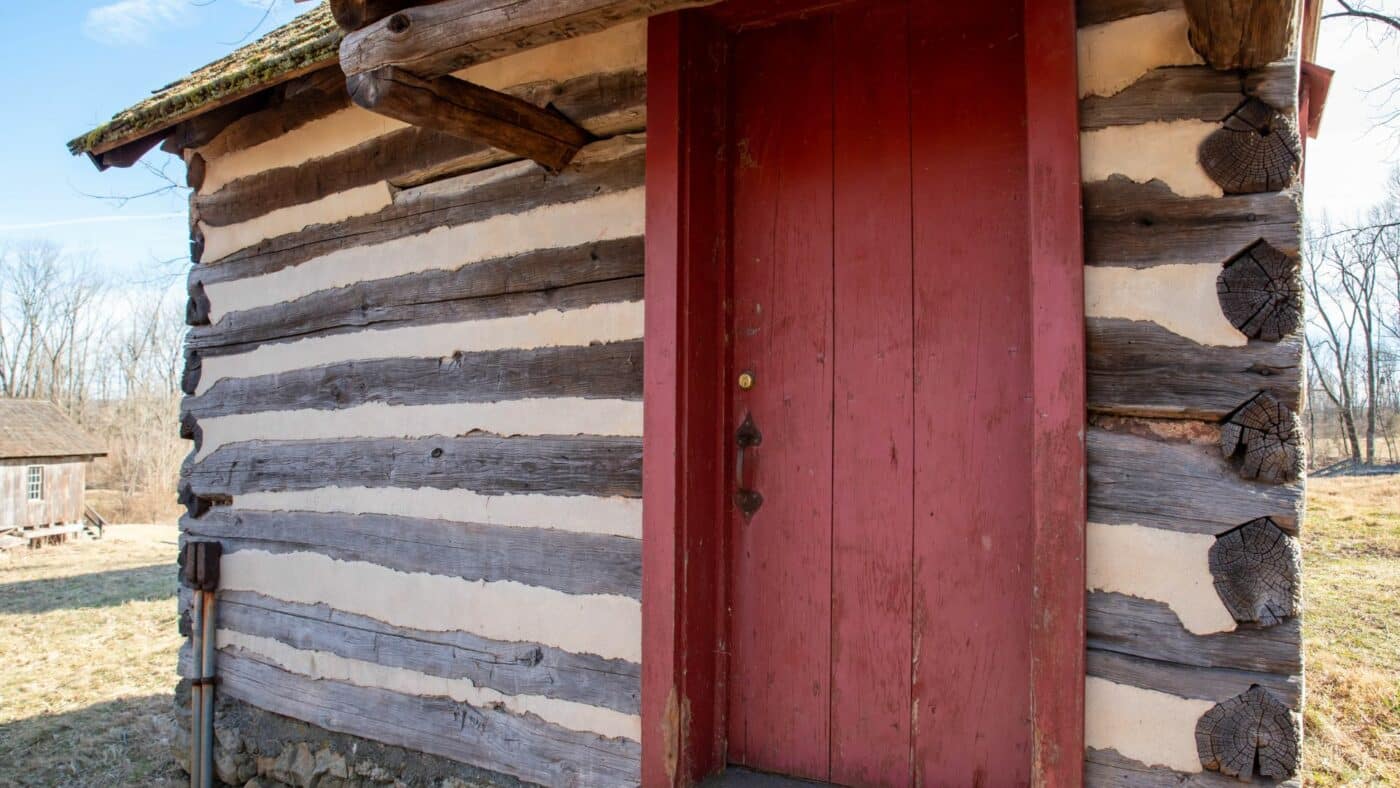
As its popularity grew, the log cabin design swept over North Europe and Asia. When the log cabin finally “crossed” the ocean into the western hemisphere, it was brought to the New World (North America) by the Swedes and Finns around 1640.
While we do not build rustic cabins like in the image above, look at our Frontier Cabin to enjoy a cozy cabin.
While not much has changed in their look, at Zook Cabins, we can create a log cabin large enough to house your whole family. Check out the video below of how Paul and Angela love their log cabin in New England.
How Did Log Cabins Become The Face Of The American Frontier?
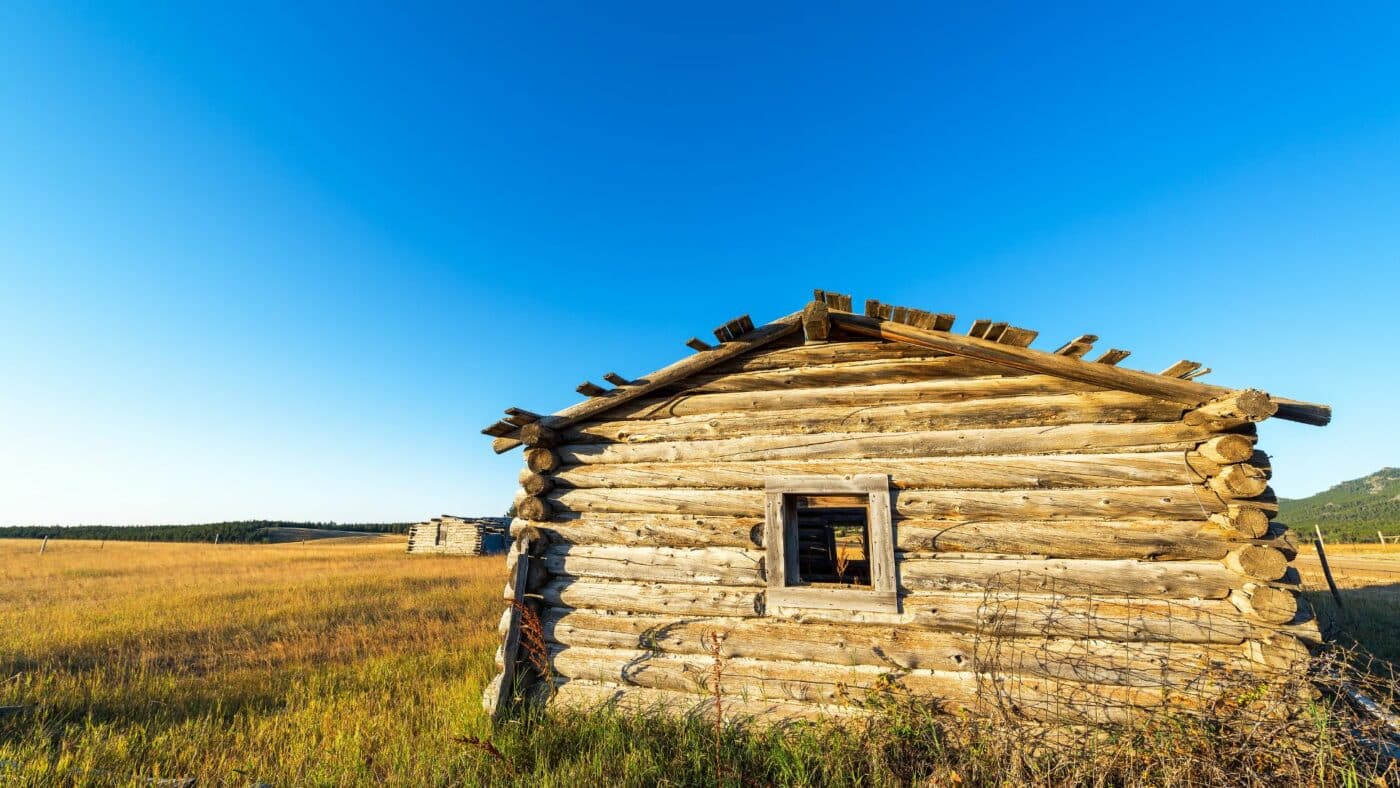
Thank The Swedes For Our Beautiful Country
Unbeknownst to the Swedes and Finns, their innovative wood construction techniques greatly benefited the colonization of New World log cabin history. The Swedes and Finns brought generations of construction experience, building with timber and simple hand tools. Once they arrived on the banks of the Delaware River and settled in the surrounding region, they knew exactly how to deal with the lack of available housing.
The New World had familiar timber, so they built log cabins. The British, Scottish, and Irish immigrants soon copied their building techniques. The ingenuity of the log cabin was that the construction was extremely simple and required no more than an axe and a saw. The pioneers could simply stack the logs one upon the other, and they weren’t restrained by the need for nails or spikes to keep the structure together. Plus, the log cabins could be constructed by one person in a couple of weeks. If there were two or more people available, the construction of the log cabin could be completed in just a few days.
The Log Cabin Empowered The Colonization Of North America
The availability of timber, the simple tools required for construction, and the possibility of individual construction caused the log cabin to be a significant factor in the success of the New World colonization. The log cabin became the well-known architectural choice for all pioneers and settlers during the 1700 and 1800s as the New World expanded across what is now known as the United States of America, etching itself another chapter in log cabin history.
What Were The Log Cabin’s Notable Developments?
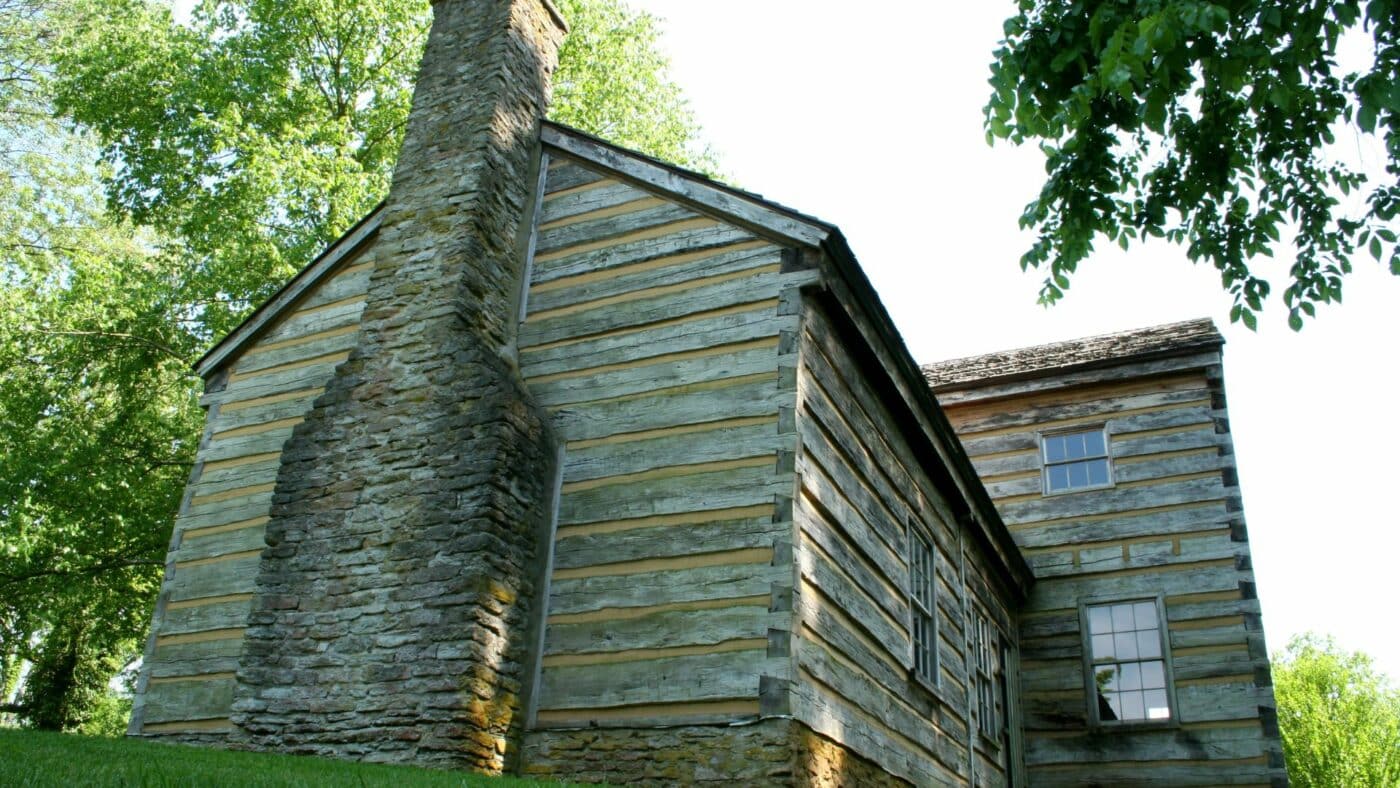
Humble Beginnings To National Recognition
The log cabin has not only impacted America’s beginnings, but this wooden home has also influenced America’s political and social culture. In the early American Frontier days, the log cabin was meant to offer temporary housing until the pioneers could build bigger, more comfortable timber board houses (similar to those we have today).
The original log cabins were simple, hastily constructed, makeshift structures. Not only were log cabins viewed as temporary and humble, they also coincided with the incredible hardships faced on the North American Frontier.
Make Fun Of The Log Cabin And See What Happens
There is one particular event in log cabin history that highlighted society’s view of log cabins. However, it began to shape the symbolic meaning of American log cabins. That event was a debate in the 1840 presidential race.
William Harrison’s opponent, Martin Van Buren, tried to downplay Harrison’s background by making fun of the fact that Harrison was born and raised in a log cabin. Instead of trying to deny his humble beginnings, Harrison shrewdly embraced it and used it to pull on the heartstrings of the common people who also lived in log cabins at that time.
This resulted in Harrison’s election to presidency by a landslide and the recognition of the log cabin as an American expression of self-sufficiency, tenacity, independence, and social mobility. No longer was the log cabin looked at as a scarlet letter, but now a way to show your embrace of the real American persona or grit, determination, and hard work.
Log Cabin’s Entry Into The American History “Hall Of Fame”
The combination of the Frontier and the War for Independence in 1812 confirmed the log cabin as exhibiting American grit and victorious tenacity. The 1860 election of Abraham Lincoln (who also grew up in a log cabin) and the cabin’s introduction into well-known literature such as, James Fenimore Cooper’s Leatherstocking Tales, further marked log cabins as a symbolic representation of the American struggle and victory over adversity. The log cabin continued to gain recognition and admiration as it was coined on tokens, pennies, and included in iconic paintings, such as, Across the Continent, Westward the Course of the Empire Takes its Way.
What Were The Biggest Changes In Style And Structure Over The Years?
The Original Log Cabin
According to log cabin history, the very first log cabins were simple with rough-hewn logs laid horizontally and connected on the end with notches. The cabin would have one room and usually 12 to 16 feet square space. It had one door and usually no windows. The spaces between the logs would be filled with chinking materials such as, small stones, wood, corn cobs, clay, or cloth.
The first log cabins were inspired by the simple Scotch-Irish style of cabins. The Scotch-Irish cabins had one rectangular 16X20 foot room with two entrances, a door in the front and in the back. These cabins also included a nice-sized hearth.
Due to the immediate need for lodging, the early pioneers were restricted by time from replicating the exact style and quality of the original Scotch-Irish cabins, but this style was used and adopted by other refugees and immigrants in the early years of the American Frontier.
The Progressive Dogtrot Cabin Style Offered More Space
Over the course of the American Frontier, the log cabins of the first settlers developed more distinct styles and became sturdier, weatherproof structures.
The Dogtrot Cabin became popular among the Northern and Western settlers in log cabin history. This was an English style cabin and it had two rooms with an open hallway separating the rooms. Both rooms had fireplaces and shared a common floor and roof.
The Saddlebag Style Brought Additional Commodities
A more advanced log cabin style around that time was known as the Saddlebag, and its structure housed two rooms both containing a hearth and chimney. A door would sometimes connect the rooms, and the rooms would enjoy a window or two. This cabin would include a loft and usually a porch.
The progression of the log cabin history slowly evolved from simple log structures in the 1600s -1800s to log homes known as “camps”, where the rich would enjoy a getaway to the mountains in the 1850s. These “camps” were the turning point for the log cabin’s previous humble association. Log cabins began to take on a fancier flare with huge fireplaces and more living space.
Continued Progression Of The Wooden Structures
Then, in the late 1800s, the Adirondack cabin style first entered the scene with its architecturally appealing angles, which brought a peak to the wooden structure’s intricacy and beauty. Not only was the architectural aesthetics more appealing, but the Adirondack style offered more height and space than ever before with the addition of a peaked roof.
Modern Wooden Structures
The log cabin was entering a new era of style, beauty, space, and function. The 1900s brought about additional styles such as the Prefab Chalet Cabin and the Mountaineer.
The biggest change in style and configuration in log cabin history was its progression from a hastily built and poorly sealed temporary structure to an intricate, stylish, and cozy structure that provides permanent residency.
How Are Log Cabins Prized Today?
Enjoy A Refreshing Lifestyle
Today the sites, smells, and feelings of a rustic log cabin capture the hearts and imaginations of both young and old. The log cabin now reaches far beyond its function as an economical and rudimentary necessity to an artistic and comfortable haven.
Yet, since it enjoys such a wide variety and application, it can be the simple sanctuary of a minimalist or the elaborate mansion of the well-to-do. The log cabin of today isn’t as much about housing, it is a way of life that many are beginning to crave, amidst a busy, fast-paced, and technological society.
Large windows, high ceilings, and decorative stonework add beautifying touches to these luxury log cabins!
Log cabins aren’t merely prized today for their stunning aesthetics, but they also contain an enduring, valuable legacy. Quality-built log cabins can be passed down for generations. Not only are these cozy wooden structures enduring, but they are also remodeled at a value equal to or higher than that of the traditional house. While the value of a log cabin today would have surely stunned the first pioneers, the American people are deeply grateful for the humble beginnings of this rustic, endeared structure.
The Development Of The Modular Log Cabin.
Today, the log cabin’s design and beauty have reached an ultimate climax with its latest evolutionary model, the modular log cabin.
Modular log Cabins, also known as prefabricated log cabins, are wooden structures that are prebuilt in a factory, delivered by sections, and assembled onsite.
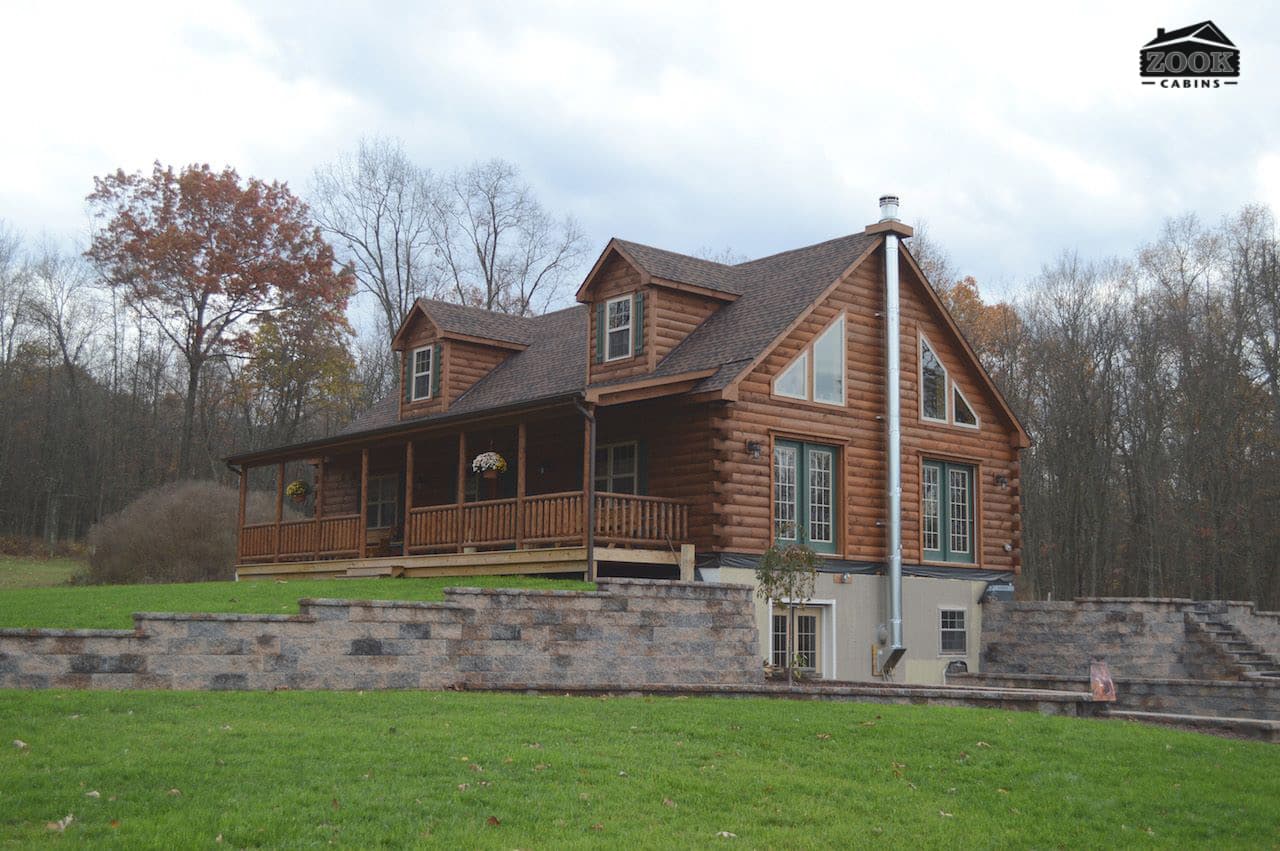
Although prefabricated buildings were mentioned in log cabin history as early as 1160 by the French and in 1902, an American Sears Catalog sold prefabricated home kits, the modular log cabin has only recently arrived on the log cabin scene.
The modular log cabin is the most efficient, environmentally friendly, and desirable log cabin on the market today. The modular log cabin was developed as a smart, higher quality alternative to the popular cabin kits and manufactured log homes of the past.
Amish built modular log cabin are set apart from the alternatives for the following reasons:
- They are permanent structures placed on a prepared foundation on site.
- The walls, flooring, roof, and entire structure is the same as any traditional stick-built home.
- They meet or exceed all residential building standards and codes.
- They appreciate in value similar to any traditional or stick-built home.
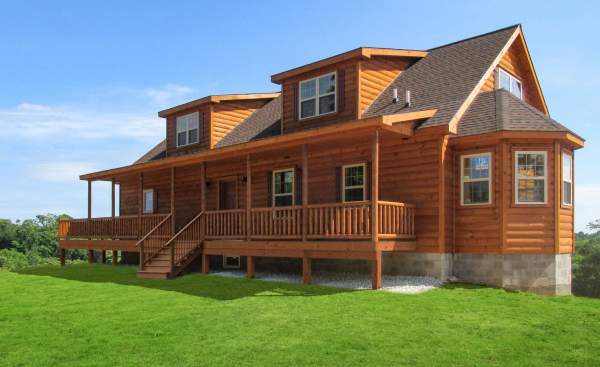
There are important distinctions between modular log cabins and manufactured log homes. And it is of utter importance that prospective log cabin owners are aware of the distinctions before purchasing their log cabin home.
Whether people are drawn to the rustic beauty of log cabins for its nostalgia, it’s refreshing lifestyle, or it’s enduring value, log cabin history will continue to live on in the hearts of America as a reminder of American tenacity during hardship and victory over adversity. Regardless of where these cabins are placed, they are built to stand for years to come!
